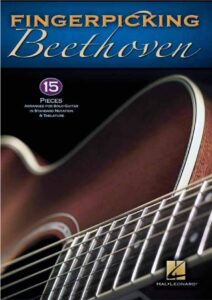Come join us now, and enjoy playing your beloved music and browse through great scores of every level and styles!
Can’t find the songbook you’re looking for? Please, email us at: sheetmusiclibrarypdf@gmail.com We’d like to help you!
Table of Contents
Beethoven Piano Concerto No. 4 Arr. For 2 Pianos (Noten)
First Movement
Third Movement

Beethoven Piano Concerto No. 4
The Piano Concerto No. 4 in G major, Op. 58 was composed by Ludwig van Beethoven between 1805 and 1806. The score is dedicated to Archduke Rudolf of Austria.
Please, subscribe to our Library.
If you are already a subscriber, please, check our NEW SCORES’ page every month for new sheet music. THANK YOU!
The composition of this piece developed from the initial sketches, dating from 1803 and 1804, until its completion between 1805 and 1806.
The final version of the piece was ready in July 1806, when Beethoven gave a copy to his brother Carl to send to the printer.4 No autograph copies are preserved of this piece, but the famous and abundant sketchbooks of the German master have survived to this day. These notebooks confirm that Beethoven followed an evolutionary process when composing, that is, he only composed after an indeterminate period of inspiration, which was followed by a period of experimentation to reach a period of gestation.
Although in most cases there is evidence of when the works were premiered and published, we do not know exactly when they were conceived, nor what chain of changes preceded their public premiere. For example, it is not known precisely on which days of which months or in which year he concentrated on the Piano Concerto No. 4, to the exclusion of everything else.
Best Sheet Music download from our Library.
The first performance was given at a private concert in March 1807 at the home of Prince Joseph Franz von Lobkowitz in Vienna, with the composer at the piano.
In that same recital, the Coriolanus Overture and Symphony No. 4. could also be heard. After this first private performance, it was sold to several publishers for publication. Beethoven had given a copy of the finished score in 1806 to his brother Carl for publication by the Breitkopf & Härtel publishing house in Leipzig, but this plan did not come to fruition.
The first edition of the work was carried out by the Bureau des Arts et d’Industrie or Kunst- und Industrie-Comptoir in August 1808 in Vienna. Likewise, it had been sold to Muzio Clementi for distribution in London, but unfortunately the copy never reached its destination.
The public premiere was held on December 22, 1808, at the Theater an der Wien in Vienna, where the heating had broken down. It consisted of a four-hour ‘marathon’ concert with music exclusively by Beethoven and which was conducted by the composer himself.
This was Beethoven’s last public appearance as a soloist with orchestra. The composer felt that he had to do something innovative. His student Carl Czerny relates that the maestro played the concerto very capriciously on that occasion, adding many more notes than were printed. Such additional notes are preserved, although incomplete, in a manuscript copy of the work. Barry Cooper has made a reconstruction of them that is probably very similar to the one Beethoven played.
The dedication on the printed score is to Archduke Rudolph of Austria, who was the younger brother of Emperor Francis I of Austria. Rodolfo was his friend, his student and his most important patron, as well as an accomplished pianist.
No one received more dedications from the German master than Rodolfo, to whom he dedicated the piano sonata ‘Les adieux’, the Hammerklavier Sonata, the Piano Concertos No. 4 and No. 5, the Archduke Trio and the Missa Solemnis.
The concerto consists of three movements:
I. Allegro moderato, in G major 4
4
II. Andante with motorcycle, in E minor 2
4
III. Rondo. Vivace, in G major 2
4
The performance of this work lasts approximately 33 minutes.
A comment in the Allgemeine musikalische Zeitung of May 1809 says that ‘[this concerto] is the most admirable, singular, artistic and complex concerto that Beethoven has ever written.’ However, after its premiere the work was forgotten until 1836, when it was revived by Félix Mendelssohn.
Emil Ludwig, Beethoven’s most important biographer, also considers it the ‘most perfect concerto for solo instrument ever composed.’
Solo pianists and their audiences took longer to accept this fourth than Beethoven’s other concertos. For his part, Felix Mendelssohn loved it, and performed it at his last concert in London in 1846. The program also included his own music for A Midsummer Night’s Dream and the Scottish Symphony.
